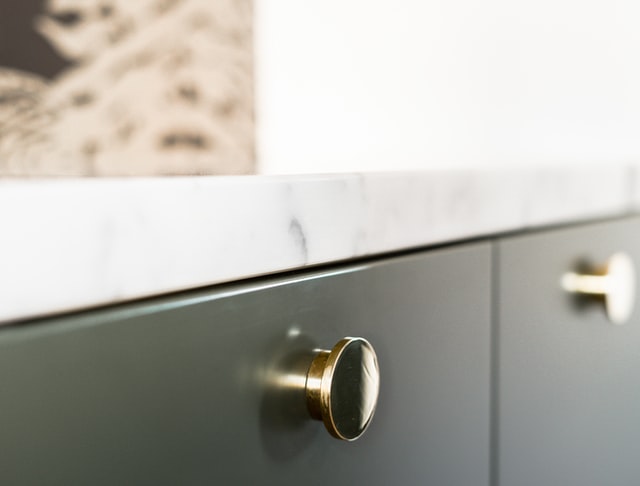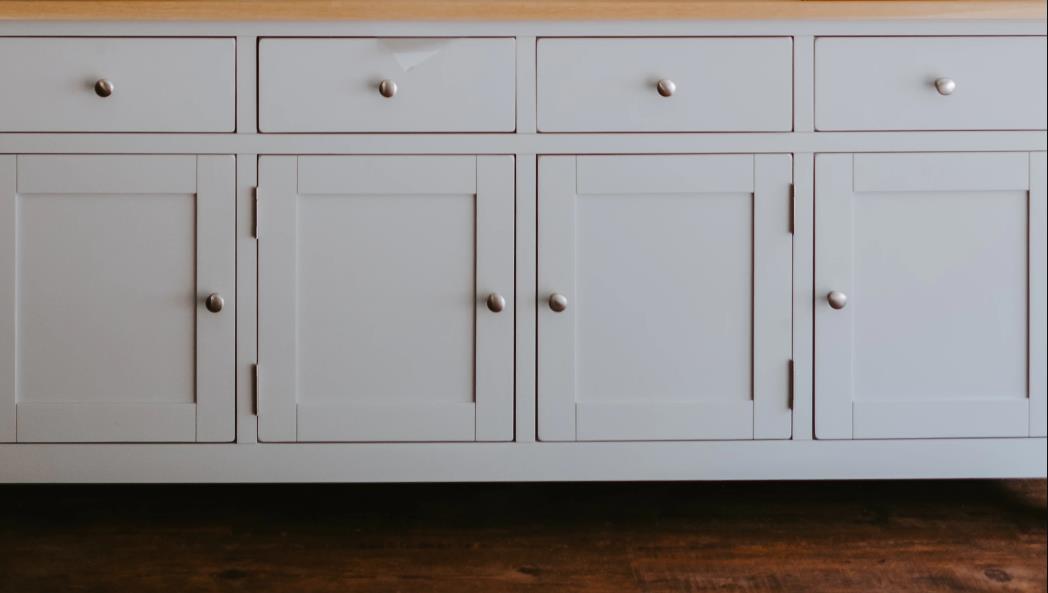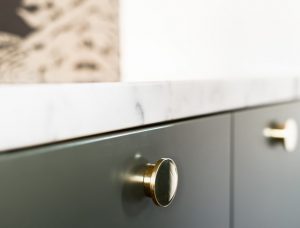It is possible to revitalize a tired and worn-out kitchen by installing new cabinet knobs. It’s a significantly less expensive alternative to spending a few thousand dollars on cabinet refinishing or, even worse, a complete cabinet rip out and remodel. How to install cabinet knobs is not nearly as difficult as it appears at first glance. Know where to put knobs and handles on kitchen cabinets. The following are the only things to consider before you begin your project.
Are your new cabinet knobs a good fit in the spaces where the old ones were?
Suppose that’s the case, congratulations! You’ve gotten lucky! All that is required is removing the old hardware, thorough cleaning of the cabinet facing around the area where the old knob was located, and installing the new bolt and knob.
This will take a little more effort on the part of the other 99.9 percent of the population.
Let’s start with the simplest of the problems. If the knob and bolt you’re replacing are slightly larger in diameter than the hole in the old one, all you have to do is use your drill to enlarge the hole in the new one. You want the spot to be nearly the same size as the bolt, if not precisely the same size. You want a snug, secure fit that doesn’t wiggle at all. Simple as tightening the bolt, and you’re finished.
However, what do you do if the knob you’re replacing is a little smaller in diameter than the one you’re replacing.
The first option is to fill the old bolt hole with epoxy, which is the most common. Allow it to dry before drilling a hole through it. It’ll be as good as new in no time.
Other options include placing a washer on the back of the cabinet and running the bolt through that washer and into the cabinet. You will notice that when you tighten everything down, the washer will bite down into the edges around each bolt hole, while the bottom of each knob will cover the front hole.
The most challenging replacement is replacing a knob with two bolts, but your cabinet only has a single hole for the knob to go into.
Assuming that it is possible to reuse the existing bolt hole, you will install a new bolt through the existing hole and mark the location of a second bolt in the same manner.
Remove the knob from the door and set it aside. Then, using a 1/4-inch drill bit, drill a pilot hole through the cabinet front to allow future installation. Increase the size of your drill bit sizes until they are the same size as the bolt. Tighten the two bolts all the way.
When you are unable to use the existing hole, the replacement becomes the most complicated. This means that you’ll need a cabinet knob to cover the hole if this is the case. Placing the knob over the hole will ensure that the entire hole is covered. Mark your pilot holes, and then proceed in the same manner as if you were installing it using an existing attachment point: by drilling pilot holes first.
Using wood putty can help you cover up a hole if you are unable to conceal it otherwise wholly. When you’re that close to the hardware, it’ll be virtually unnoticeable. The wood putty will be close enough in color to your cabinets that the slight blemish will not be nearly as noticeable as a gaping hole would be.
You can learn how to install cabinet knobs in various ways, and these are just a few of the methods you can employ. Fortunately, there are so many knob options available that you’ll be able to find something that is both visually appealing and simple to install.
Cabinet Knobs: A Simple Solution for Updating Your Kitchen
It’s an unavoidable fact of life. You will use your kitchen cabinets over and over again, day after day, and as a result, the cabinet knobs will begin to look dingy as a result of their constant use.
It doesn’t matter whether they’re in the kitchen or the bathroom; those cabinet knobs see many actions. Unfortunately, the hands that use them are not always free of bacteria. It is inevitable that when you are cooking a meal, and you realize that you have forgotten to get a few ingredients from the shelves, you will reach for those cabinet knobs with your hands, which may still have some of the initial elements on them. When you get out of the shower and into the bathroom, you will grab hold of the cabinet knobs to put things away. If you have any shaving cream residue on your hands, that residue will now be on the cabinet knobs.
Even if your hands are clean, the oil from your skin is still getting onto the cabinet knobs and other surfaces. Other than putting on cloth gloves every time you need to touch the cabinet knobs, there isn’t much you can do to prevent this from happening. However, this is not a convenient way to get things done.
When the time comes, you must be prepared to swap out the cabinet knobs for new ones. Instead of detracting from your décor, you want them to add a splash of color and vibrancy to space.
One of the first things decorators recommend when it comes to sprucing up a room and making it appear new again is replacing the cabinet knobs on the cabinets. A simple set of unique cabinet knobs can instantly update the appearance of your cabinetry by several years.
You want to make sure that the cabinet knobs you choose will complement the existing décor in your home. However, there is an almost limitless number of design options available in cabinet knobs. Fortunately, a wide range of cabinet knobs are available, ranging from country and antique-looking cabinet knobs to modern or novelty cabinet knobs.
When you are ready to replace the cabinet knobs in your home, there are a couple of options for how you can go about it.
First and foremost, you should consider replacing the knobs you currently have with something of a similar size. This is the quickest and most straightforward method of replacing cabinet knobs. Make a note of the size and shape of the old cabinet knobs when you go shopping, and look for knobs that are the same size and shape, so that you can replace them with little or no additional work. They will fit into space where the others previously occupied.
The second option is to redesign your kitchen cabinets completely. This can be accomplished by purchasing any cabinet knobs that you desire and then using wood filler to fill in the holes left by the old cabinet knobs before putting the new knobs into service. After that, you can refinish the cabinet, and it will look as good as new once again. When you replace cabinet knobs in this manner, you have the option of relocating the knobs if they were initially placed in an unsatisfactory location (industry standards are not always ideal).



